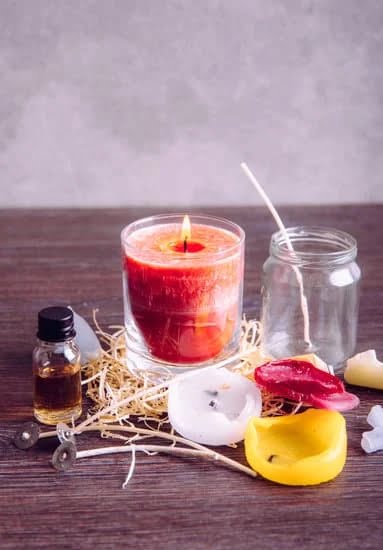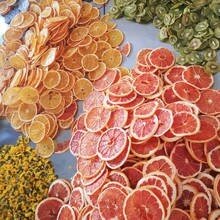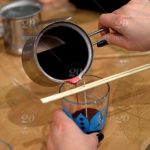Are you wondering how to prevent tunneling in candle making? Tunneling can be a frustrating issue for many candle makers, but with the right techniques and understanding of the causes, it can be easily prevented. In this article, we will explore various methods to avoid tunneling and achieve beautiful, even-burning candles.
One of the key factors in preventing tunneling is understanding the root causes of this problem. From choosing the right wax and wick to mastering proper pouring techniques, there are several aspects to consider when creating candles that burn evenly without creating tunnels. By addressing each of these factors, you can ensure that your candles burn cleanly and beautifully.
In the following sections, we will delve into the specific elements that contribute to tunneling in candle making. From selecting the perfect wax and wick for your candles to using fragrances and dyes wisely, we will cover all the essential aspects of creating candles that are free from tunneling issues.
Whether you’re making pillar candles or container candles, we will provide tips for preventing tunneling and troubleshooting any issues that may arise. Stay tuned to learn how to create stunning, tunnel-free candles for all occasions.
Choosing the Right Wax for Your Candles
When it comes to preventing tunneling in candle making, choosing the right wax is essential. The type of wax you use can greatly affect the burning quality of your candles. Here are some options to consider when selecting the perfect wax for your candles:
- Paraffin Wax: This type of wax is known for its excellent scent throw and ability to hold colors well. It is often used for container candles but can also be suitable for other types of candles.
- Soy Wax: Soy wax is derived from soybean oil and is a popular choice for environmentally conscious candle makers. It has a clean burn and can help reduce tunneling when paired with the right wick.
- Beeswax: Known for its natural and long-lasting burn, beeswax is a great option for preventing tunneling. However, it can be more challenging to work with due to its high melting point.
In addition to the type of wax, considering the blend of the wax is also important in preventing tunneling. Some waxes are designed specifically to minimize issues such as tunneling and uneven burning, so be sure to explore different blends available in the market.
Properly understanding and selecting the right type of wax for your candles can make a significant difference in preventing tunneling issues. By choosing a high-quality wax that suits your candle-making needs, you can set yourself up for success in creating beautifully burning candles.
Lastly, experimenting with different waxes and blends while following best practices on how to prevent tunneling in candle making will ultimately help you find the perfect wax that meets your specific requirements.
Selecting the Perfect Wick for Your Candles
When it comes to preventing tunneling in candle making, choosing the right wick plays a crucial role. The size and type of wick you select can significantly impact the way your candle burns. Here are some tips on selecting the perfect wick for your candles:
- Consider the diameter of your container or pillar candle when choosing a wick size. A larger diameter will require a larger wick to ensure an even burn.
- Different types of wicks are designed for specific types of wax. Make sure to choose a wick that is compatible with the type of wax you are using for your candles.
- Pay attention to the material of the wick. Cotton wicks are a popular choice due to their clean burn, while wooden wicks offer a unique aesthetic and crackling sound when lit.
Understanding how different wick options can affect the burning process is essential in preventing tunneling in candle making. By taking the time to select the perfect wick for your candles, you can ensure a more even and efficient burn, ultimately reducing the risk of tunneling.
Properly selecting a wick for your candles is just one step towards preventing tunneling in candle making. Once you have chosen the right size and type of wick, it is important to also consider other factors that contribute to tunneling, such as wax selection, pouring techniques, fragrance usage, and jar size and shape. By taking a comprehensive approach to candle making, you can minimize the risk of tunneling and create high-quality candles that burn evenly from start to finish.
Proper Temperature and Pouring Techniques
One of the key factors to prevent tunneling in candle making is the proper temperature and pouring techniques. When making candles, it’s crucial to ensure that the wax is melted at the right temperature and poured correctly to avoid any tunneling issues.
To prevent tunneling, it is important to melt the wax at the appropriate temperature recommended by the manufacturer. Different types of waxes have different melting points, so it’s essential to follow the guidelines provided. Overheating the wax can cause shrinkage and cracking, which may lead to tunneling as the candle burns.
Once the wax is melted at the correct temperature, it should be poured carefully into the container or mold. Slow, steady pouring helps reduce air pockets and ensures an even distribution of wax, minimizing the risk of tunneling. It’s also important to allow enough time for the candle to cool and harden properly before trimming the wick and lighting it.
| Factors to Consider | Prevention Techniques |
|---|---|
| Melting Wax | Follow recommended melting point; avoid overheating |
| Pouring Technique | Pour slowly and steadily; allow proper cooling time |
Using Fragrances and Dyes Wisely
When it comes to candle making, adding fragrances and dyes to your candles can enhance their aesthetic appeal and create a pleasant atmosphere when they are burning. However, it is important to use these elements wisely in order to prevent tunneling in your candles.
Tunneling occurs when the wax burns down the center of the candle, leaving a thick ring of unburned wax around the edge. This not only affects the appearance of the candle but also diminishes its burn time.
To prevent tunneling in candle making, it is crucial to carefully measure and add fragrances and dyes to your wax. Excessive use of fragrance oils or dyes can negatively impact the way the wax burns, leading to uneven melting and tunneling.
It is recommended to follow the guidelines provided by the manufacturer of the fragrance oil or dye regarding how much should be used per pound of wax. Additionally, consider using fragrance oils that are specifically designed for candle making as they are formulated to work well with different types of waxes.
Another tip for preventing tunneling when using fragrances and dyes in candle making is to ensure that they are thoroughly mixed into the wax. Incomplete mixing can lead to uneven distribution of fragrances and dyes, which may result in uneven burning and tunneling. Take your time when blending in these elements into the melted wax, making sure that they are fully incorporated before pouring the mixture into your candle containers.
Properly incorporating fragrances and dyes into your candle-making process can significantly contribute to preventing tunneling issues in your finished products. By following these guidelines, you can enjoy beautifully scented and colored candles without compromising their burn quality.
| Preventing Tunneling Tips | Description |
|---|---|
| Carefully measure fragrances and dyes | Following manufacturer’s guidelines for proper usage |
| Thoroughly mix fragrances and dyes | To avoid uneven distribution |
Importance of Jar Size and Shape for Even Burning
When it comes to preventing tunneling in candle making, the size and shape of the jar play a crucial role in ensuring even burning. The container in which the candle is poured can impact the way the wax melts and burns, leading to tunneling if not chosen carefully. This section will cover the importance of selecting the right jar size and shape for your candles to prevent tunneling and achieve an even burn.
Understanding the Impact of Jar Size
The size of the jar relative to the diameter of the candle plays a significant role in preventing tunneling. If the jar is too wide or too narrow compared to the size of the candle, it can result in uneven burning.
A jar that is too wide can cause the wax to spread outwards, resulting in a shallow melt pool and subsequent tunneling. On the other hand, a jar that is too narrow can restrict airflow and lead to incomplete melting of wax around the edges.
Choosing Appropriate Jar Shape
In addition to size, the shape of the jar can also affect how evenly a candle burns. Straight-sided jars are often recommended for container candles as they allow for a consistent distribution of heat, promoting even melting of wax and reducing tunneling. Tapered or curved jars may disrupt this balance by causing uneven heat distribution, leading to tunneling issues.
Selecting Materials for Jars
The material of the jar should also be considered when aiming to prevent tunneling. Transparent glass jars are ideal as they allow you to monitor how evenly your candle is burning. Additionally, glass conducts heat more effectively than other materials, which can promote an even melt pool during burning. However, if using opaque jars or containers made from different materials such as metal or ceramic, extra care should be taken to ensure proper temperature control during pouring and burning.
By carefully considering these factors related to jar size, shape, and material, candle makers can minimize tunneling issues and achieve a more even burn for their candles.
Tips for Preventing Tunneling in Different Types of Candles (Pillar, Container, Etc)
When it comes to candle making, preventing tunneling is a key concern for crafters. Tunneling occurs when the wax burns down the center of the candle, leaving a ring of unmelted wax around the edge. This not only affects the aesthetic appeal of the candle but also reduces its burn time and overall performance. Fortunately, there are various tips and techniques that can be employed to prevent tunneling in different types of candles.
Pillar Candles
Pillar candles are especially prone to tunneling due to their wide diameter and solid structure. To prevent tunneling in pillar candles, it is important to choose a wax with a high melting point that will create a melt pool that reaches the edge of the candle. Additionally, selecting a larger wick size and ensuring proper pouring temperature can help promote an even burn and minimize tunneling.
Container Candles
For container candles, selecting the right type of wax is crucial in preventing tunneling. Soy wax is known for producing a clean and even burn, reducing the likelihood of tunneling. Moreover, using a wick that is properly sized for the diameter of the container and paying attention to fragrance and dye usage can also contribute to preventing tunneling in container candles.
Other Types of Candles
Beyond pillar and container candles, different types such as taper or tea light candles also require specific considerations to prevent tunneling. For example, tapers may benefit from using wick holders to keep them centered during burning, while tea lights may require adjustments in pouring temperature to prevent sinking or uneven burning.
By understanding these tips for preventing tunneling in different types of candles and implementing them effectively, crafters can ensure that their creations burn evenly and beautifully without experiencing this common issue.
Troubleshooting Tunneling Issues and Solutions
In conclusion, preventing tunneling in candle making requires a thorough understanding of the causes and practical solutions. Choosing the right wax is crucial, as it can greatly affect the performance of your candles. Be sure to select a wax that is specifically formulated for the type of candle you are making, whether it’s pillar candles or container candles.
Additionally, choosing the perfect wick for your candles is essential. The size and material of the wick will determine how evenly and efficiently your candle burns.
Proper temperature and pouring techniques also play a significant role in preventing tunneling. It’s important to follow the recommended temperature guidelines when melting and pouring your wax to avoid any issues with uneven burning. Using fragrances and dyes wisely can also impact the burn quality of your candles. Be sure to use high-quality fragrances and dyes that are specifically designed for candle making to prevent any tunneling issues.
Furthermore, understanding the importance of jar size and shape for even burning is crucial, especially if you are making container candles. Different types of containers may require different wick sizes to ensure that the entire surface area of the wax melts evenly.
Lastly, familiarize yourself with specific tips for preventing tunneling in different types of candles such as pillars or jars, as each type may have its own set of considerations. By implementing these preventative measures, you can greatly reduce or eliminate tunneling in your candle making process altogether.
In addition, this section provides valuable troubleshooting advice for identifying and addressing tunneling issues should they arise despite taking preventive measures. It’s important to understand common causes such as using the wrong wick size or poor temperature control during pouring. By following clear steps targeted at resolving these issues, you can salvage even poorly burning candles and avoid tunneling in future batches by applying lessons learned from troubleshooting experiences.
Frequently Asked Questions
How Do I Stop My Candles From Tunneling?
To stop candles from tunneling, it’s important to let the candle burn long enough for the entire surface to become liquid before extinguishing it. This helps ensure that the wax melts evenly and prevents tunneling. Using a proper-sized wick for the diameter of the candle can also help prevent tunneling.
How Do You Stop a Sinkhole From Making Candles?
Sinkholes and candles are unrelated issues, so stopping a sinkhole won’t have any impact on candlemaking or tunneling. Sinkholes are typically caused by erosion and water drainage underground, while candle tunneling is caused by improper burning and wick size. It’s important to address each issue separately with appropriate solutions.
Why Are My Candles Tunneling After Pouring?
Candles may be tunneling after pouring due to several factors such as using a wick that is too small for the candle diameter, or not letting the top layer of wax melt completely during initial burns.
It’s essential to use properly sized wicks and allow enough time for the entire surface to liquefy during each burning session in order to prevent tunneling.

Welcome to my candle making blog! In this blog, I will be sharing my tips and tricks for making candles. I will also be sharing some of my favorite recipes.





